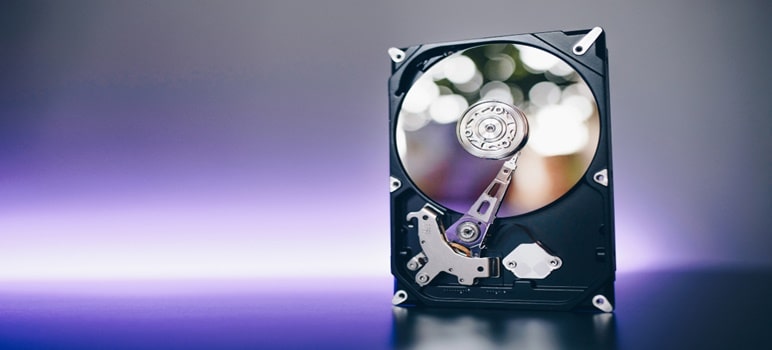Many times you might have had experienced your computer becoming badly affected due to Trojan viruses and the only option to make it work again was to format the system and reinstall the operating system. The first thing to realize here is that it isn’t the system that is going to be formatted but the hard disk is. The operating system, all the software, data and even viruses primarily affect the hard drive and formatting the computer would erase everything present on the drive.
How to Format Your Computer Hard Drive?
There are different ways in which formatting a hard drive can be done and one such method is formatting partial fragments of the drive with the operating system. This method involves right clicking on the drive that has to be formatted and then clicking on the format option. However, this method only works for drives which do not contain the operating system. If complete formatting is to be done, then Windows Vista or any other operating system would also be reinstalled. In fact, the Windows Vista operating system disc can be used to format the computer and the following lines provide information on how this can be done.

Important Tip: Before formatting the drive and reinstalling the operating system, Windows Vista or any other, it is a good idea to have the utility driver disk present beforehand or even download the drivers from the internet for the hardware to work. Some important drivers include that of motherboard, soundcard, graphic card, video card, Bluetooth and Wi-Fi in case of a laptop etc.
Steps To Format the Computer Using Windows Vista OS Disc
Here are the step-by-step guide to format your computer with a Windows Vista OS disc:
1. Checking The Compatibility of the system with Windows Vista
The first thing which should be done is to check the compatibility of the computer system with the new Operating system. If Windows Vista was the original OS then this step could be skipped but if it wasn’t then the following steps should be followed:
- First get a lab test of System Requirements done to find out the things that the computer can do and the things it cannot do.
- If the computer fails the test then it has to be upgraded (mostly RAM and Chipset) which can be assisted through a computer technician offline or by checking online forums.
- If the system has passed the test then the next step could be proceeded to.
2. Saving all the Necessary Data
There are two cases in this part, if the matter has been corrupted with the virus and if it has not.
- In case the formatting is done just to reinstall or upgrade the operating system then the information and data present in the hard drive has to be backed up. This can be done via external hard disks and DVDs or VCDs.
- If the matter in the drive has been corrupted with the virus then saving anything would allow the viruses to continue which could make matters again difficult in the future. In this scenario, no backup is required.
3. Using the Disc
This step is where the Windows Vista Operating System Disk is going to help. Before starting, always remember that Window Systems run on NTFS partition system and if the option comes between NTFS and FAT32, the former option should be chosen. Now, put the disc of Windows Vista into the CD or DVD drive and then restart the system.
4. Setting BIOS settings
When the computer has restarted, set F2 or F12 to go to setup or the boot menu. This is done to change the system settings so that the computer knows that the first thing which has to be accessed is the disc in the drive. To change these settings, the BIOS settings and menu has to be accessed properly. If you are unsure about the BIOS system settings then keep a manual guide in hand before attempting it.
5. Formatting and Installing
Save BIOS and again restart the system. An option would come up to boot from the CD or DVD drive (usually by pressing the space bar). After the CD is accessed, the DOS system checks the disc in the drive and then presents a series of options that should be selected. The first thing would involve entering the CD key of the windows setup to ensure that a genuine operating system is being installed. The system would then ask if the installation has to be done automatically or custom. Select the latter.
6. Select the drive in which the OS would be installed
The drive that is selected would be formatted and the system would ask if the whole system has to be formatted or not. Select the appropriate option and then press enter.
The question might come up for NTFS versus FAT32 drive partition and the former should be chosen. After choosing these options, formatting of the drive and selecting the options necessary, the system would take on the whole process and the drive would be formatted. After that, select next to continue with the installation of the operating system. The time taken here depends upon the computer’s performance and speed and it can be anything from 25 minutes to one hour.
Reinstall All Your Drivers
After finishing all the copying of the files and setup, the system would restart into freshly installed Windows Vista Operating System.
After that, the first thing which should be done is driver installation. If there is the Utility Driver disk for that computer, then it should be inserted and the whole setup would be concluded automatically. In case the driver disk doesn’t work, then the user would have to take over the setup by getting the drivers from the web and then install them one by one.
Don’t Forget Your Antivirus
In case the system was formatted due to virus concerns, install a good antivirus this time around which provides total protection from disks and internet coverage too. The aforementioned steps would ensure that the formatting and installation of the operating system on the computer goes by quite easily and without any loss of important information.
Wrap Up
Sometimes you just have to format your computer and reinstall your operating system but it should always be your last resort. Looking after your computer will not only prevent errors but it will also speed your computer up and have it running smoothly.




Well informative post..
your instructions are really good..its seems to be easy and simple task..thanks for sharing.
Hey I have heard that too much of formatting can make the hard disk weak and its life become shorter. is it right?
I also heard that formatting doesn’t cause short life span for HDD but deleting partitions many times cause this. Please Make it clear.
Hi, Peter! I hate to format my PC. I’m too lazy to install all the software I need. I use a great antivirus to prevent risks and I scan it every 10 days. Actually, after reading your article I realized I didn’t even format properly. I’ll print your article just in case 🙂
Hi Peter,
Yes, I totally agree on “formating your computer is the last resort”. If your computer is infected with virus, you can boot into safe mode and run malwarebytes. Malwarebytes is the best at picking up virus, trojans, and malware.
This would be the simplest solution for installing Vista but only after loosing all your valuable data. You should take backup first and only then format the system so that your data might kept safe.
This tutorial is indeed helpful and worth kudos!!
Thanks again,
Oliver
Hi Peter,
Your instructions here are very methodical and can greatly help those who are not really computer savvy. During the XP days, I used to ask my brother to do the reformatting and reinstallation for me. However, come Vista and Seven, the method is in GUI making it a bit easy to understand what you need to do during the process. Thanks to the GUI of the installation process, I am now able to do this thing on my own. But for those who are practically blank on these and have never done such, you post is actually a helpful “how to” guide.
This is a straight forward guide, and to format a hard disk with a Windows disc is very easy. When I format my hard disks, I always use NTFS and not FAT32 partion. FAT32 works on some USB flash drivers that I use to play music on an old stereo. I think that NTFS is a newer format partion.
My laptop just crash yesterday. I think format is the last choice for me if I fail to repair it. What I am worry now is whether or not I am able to copy my files to a safe place or not.